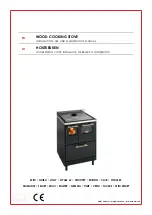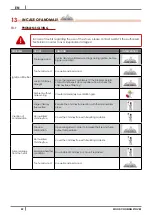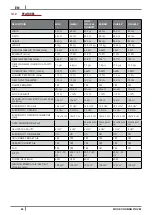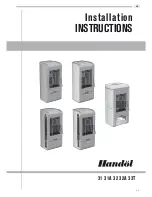
10
WOOD COOKING STOVES
EN
Fig. 8 - Example 3
LEGEND
1
Insulating material
2
Inspection plug
3
Minimum safety distance = 0,5 mt
4
Damper
•
External chimney flue entirely made up of insulated stainless steel pipes, i.e. with double wall of minimum Ø150
mm: all must be firmly attached to the wall. For chimney against wind effects please (see
•
Ducting system through T-unions which enables an easy cleaning without disassembling the pipes.
We recommend to check with your chimney flue manufacturer the safety distances which
must be respected and the type of insulating material. The aforesaid regulations are valid
also for holes made on the wall (EN 13501 - EN 13063 - EN 1856 - EN 1806 - EN 15827).
9
FUEL
9.1
FUEL
•
The allowed fuel is firewood and its derivatives (lignite blocks, compressed sawdust, etc.) with a maximum
water content of 20%.
•
To obtain good firewood, it must be seasoned outside for at least 2 years in a place protected from the
weather.
•
If the wood is purchased it must comply with standard EN 14961.
Using damp wood or scraps of bark results in the formation of creosote in the ducts and in
the hearth. The heat output of damp wood is much lower than the heat output of dry wood
and pollutes a lot more.
•
To know the lenght of wood log to use, check the dimensions of stove combustion chamber.
•
Here following some information about the quality of different type of woods:
TYPE OF WOOD
QUALITY
% PERFORMANCE
Oak
Excellent
100
Hornbeam
Excellent
100
Ash
Very good
92
Maple
Very good
91
Birch
Good
89
Summary of Contents for MINI
Page 51: ...NOTE...











































